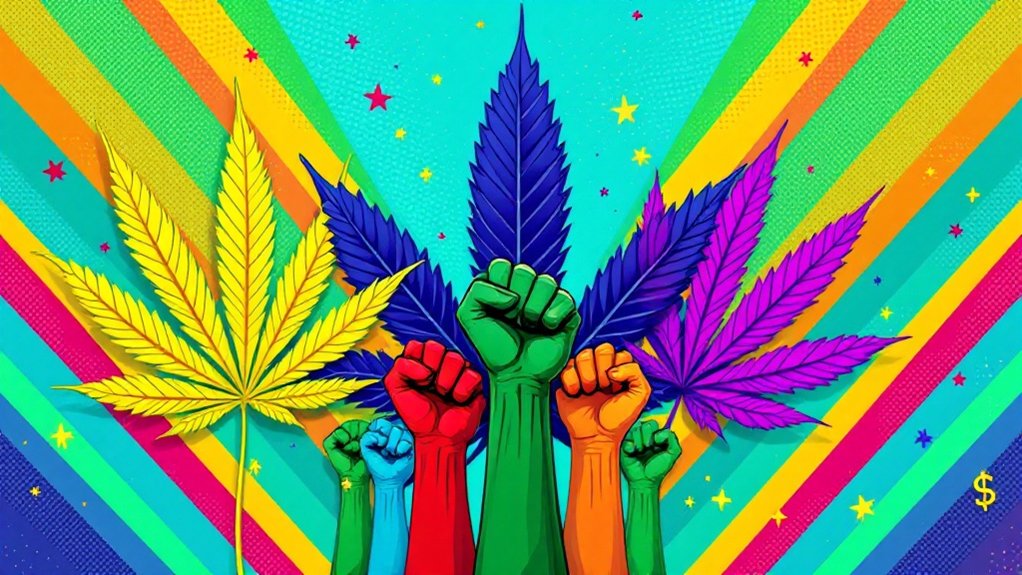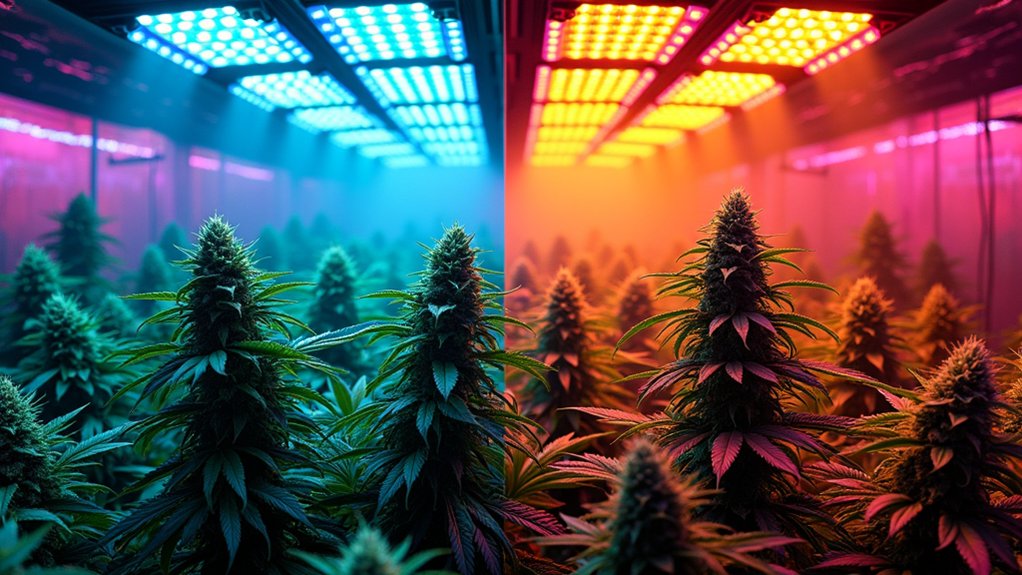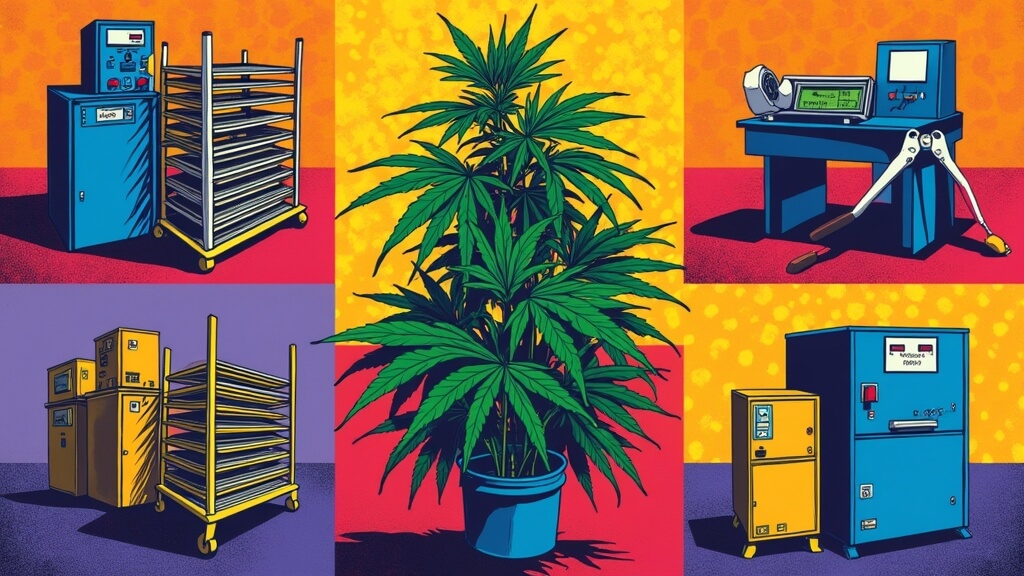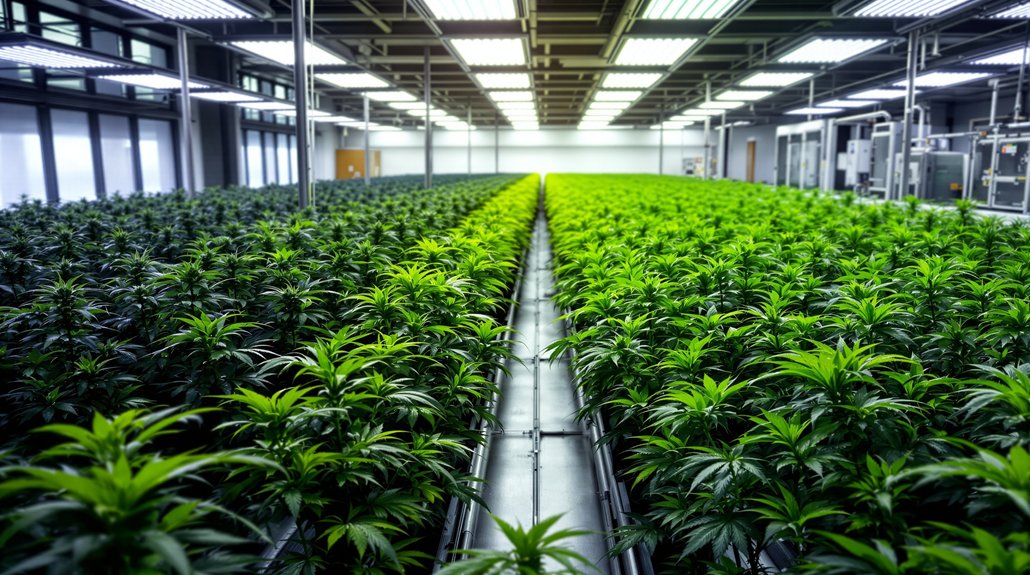The cannabis industry’s traditional gatekeepers are stepping aside as a new generation of leaders takes control. Women now occupy 39% of executive positions across major cannabis companies, while BIPOC ownership has climbed to 18.7% in just three years. These entrepreneurs are fundamentally reshaping how America consumes, discusses, and innovates around cannabis. Their influence extends far beyond boardroom diversity metrics. The question isn’t whether this shift will continue, but how dramatically it will transform an industry built on exclusion.
Breaking Down Barriers: How Marginalized Communities Are Claiming Their Space

While cannabis prohibition historically targeted marginalized communities with disproportionate enforcement, the industry’s rapid expansion is now creating unprecedented opportunities for these same groups to reclaim their narrative and economic power.
Adult-use cannabis now operates legally in 24 states, with 79% of Americans living within reach of dispensaries. The numbers tell a compelling story: 40% of cannabis manufacturing executives are BIPOC, while women hold half of all marketing and finance positions. Ancillary companies report 44% BIPOC ownership rates.
The data reveals a striking transformation: nearly half of cannabis ancillary businesses now have BIPOC ownership, reshaping industry leadership.
Local equity policies increasingly prioritize licenses for marginalized entrepreneurs, including BIPOC and LGBTQ+ business owners. Community-led events amplify queer, femme, and BIPOC perspectives within mainstream cannabis culture. The market’s trajectory toward a projected $45.3 billion by 2025 creates substantial wealth-building potential for these historically excluded voices. This growth is further accelerated by online cannabis sales projected to increase by 300% by 2025, providing digital platforms that lower barriers to entry for marginalized entrepreneurs.
These shifts matter, the industry now supports over 440,000 jobs nationwide, transforming economic landscapes for communities once criminalized.
The Economic Power Shift: BIPOC Leadership Rising in Cannabis Boardrooms
As cannabis executives gathered in boardrooms across the country last year, a quiet revolution was already underway, BIPOC ownership in the industry climbed to 18.7% of all cannabis owners, marking a significant shift from the 15.4% recorded just one prior.
This upward trajectory signals meaningful change in an industry projected to reach $45 billion by 2025. BIPOC-led companies are driving innovation through product diversification strategies while contributing to the industry’s $115.2 billion economic impact. The sector now supports approximately 440,445 full-time jobs across the United States, creating substantial employment opportunities for diverse communities.
Social equity programs in New York and Massachusetts are creating pathways for minority entrepreneurs. However, systemic barriers persist. Limited access to banking services and economic capital continues restricting growth opportunities. Cannabis mergers and acquisitions showed sluggish growth in 2024, though industry experts predict expansion in 2025 as larger operators acquire distressed assets.
Organizations like the Minority Cannabis Business Association are addressing these challenges through targeted training sessions, helping translate boardroom diversity into sustained economic power.
Women at the Helm: Female Entrepreneurs Reshaping Industry Standards

From corner offices to cannabis cultivation facilities, female entrepreneurs are commanding unprecedented influence in an industry where women now occupy 39% of executive positions, a remarkable leap from just 12.1% a decade ago.
Leaders like Jessica Billingsley made history by taking Akerna public on Nasdaq, while Emily Paxhia shapes investment landscapes through Poseidon Asset Management.
Female-led innovation drives market evolution. Olivia Alexander’s Kush Queen targets wellness-focused consumers, capitalizing on women’s rising consumption rates, particularly among those aged 19-30, who now outpace men for the first time since 1975. These entrepreneurs recognize that 1 in 3 women now consume cannabis products, representing a massive market opportunity.
Products addressing sleep, stress relief, and sexual wellness dominate growth trajectories.
However, funding disparities persist. Less than 3% of cannabis financing reaches women-owned businesses, creating barriers despite executive gains and consumer influence driving industry transformation.
Queer Wellness Revolution: LGBTQ+ Voices Driving Product Innovation
Beyond executive boardrooms, the cannabis industry’s most innovative wellness products emerge from LGBTQ+ entrepreneurs who understand their community’s unique needs firsthand.
These founders create targeted solutions like low-dose edibles for anxiety relief and CBD-infused skincare designed for hormone therapy users. Gender-neutral packaging isn’t just trendy, it’s intentional.
Purpose-driven design meets authentic need, every product detail reflects deep community understanding rather than surface-level market research.
Queer-led brands develop specialized tinctures and sexual wellness products that mainstream companies often overlook. Customer feedback drives cannabinoid profiles tailored to specific wellness concerns within LGBTQ+ communities.
The results speak volumes: higher cannabis usage rates among LGB adults fuel demand for these niche innovations.
This demographic shows markedly greater consumption than heterosexual counterparts, particularly among college-educated populations. The cannabis industry’s embrace of diversity has created fertile ground for these entrepreneurs, with established companies increasingly recognizing the value of LGBTQ+ acceptance in product development.
Pride month campaigns showcase these wellness narratives, while queer voices increasingly define broader consumer trends and product preferences industry-wide.

Despite promising legislative frameworks across twenty states, social equity programs in cannabis continue struggling to deliver meaningful ownership opportunities to communities most harmed by prohibition.
Only fifteen of thirty-six legal cannabis states maintain formal social equity programs, with none achieving full industry equity across key pillars of ownership, community investment, justice reform, and market access.
The numbers tell a sobering story. Washington issued just nine social equity retail licenses by February 2025, with recipients reporting major funding and location challenges. However, the state plans to issue 52 new retail social equity licenses between June and July 2025, representing the largest expansion since the adult-use market launched.
Illinois delayed licenses until 2022 due to lawsuits, despite launching extensive equity plans in 2019. License caps in twenty-six states inflate values, favoring deep-pocketed operators over equity applicants. Past cannabis convictions continue to disqualify potential operators from ownership in many state programs.
Real barriers persist: upfront capital requirements, commercial real estate costs, and investor pressure that erodes actual ownership control among social equity licensees.
Cultural Heritage Meets Cannabis: Authentic Brand Stories Take Center Stage
While social equity programs wrestle with systemic barriers, a parallel movement is reshaping cannabis marketing through authentic cultural storytelling that transforms generic products into deeply personal brand experiences.
Craft cannabis brands increasingly leverage family heritage, veteran backgrounds, and cultural roots to differentiate themselves from corporate competitors focused solely on potency metrics.
Authentic storytelling rooted in heritage and culture creates powerful differentiation against corporate cannabis brands obsessed with THC percentages alone.
BIPOC and queer-owned companies particularly excel at weaving generational stories into their brand identity, creating distinct marketplace voices that resonate with values-driven consumers.
These brands partner with local artists and musicians while supporting community advocacy efforts, embedding themselves into lifestyle moments rather than relying on traditional advertising. Modern consumers seek complex flavor profiles and consistent effects rather than simply chasing the highest THC percentages available.
Each harvest becomes a cultural artifact that reflects the growers’ personal stories and community values, moving beyond simple product sales to preserve meaningful traditions.
BDS Analytics data confirms that transparent, narrative-driven brands greatly outperform those dependent on paid promotions, as consumers prioritize authenticity over flashy marketing campaigns when building lasting brand loyalty.
Generation Change: How Younger Demographics Are Fueling Inclusive Growth
How dramatically can two generations reshape an entire industry? Millennials and Gen Z collectively drive over 60% of all U.S. cannabis sales, fundamentally transforming market dynamics through their purchasing power and evolving preferences.
Millennials, now in peak earning years, account for 46.2% of total cannabis sales while prioritizing wellness-oriented products like edibles and low-dose beverages. Gen Z represents the fastest-growing segment with 11.3% year-over-year market share increases, favoring vape pens over traditional flower products.
These demographics demand authentic brand stories and transparency in production. Their focus on relief from anxiety, chronic pain, and burnout drives innovation in CBD products and wellness alternatives. A significant 69% prefer cannabis over alcohol among individuals aged 18-24, viewing it as a practical solution for managing anxiety.
Women’s purchasing power grows simultaneously, now representing one in three transactions, while brands respond with inclusive marketing strategies targeting this diversifying consumer base. The market’s projected 16.9% CAGR indicates substantial growth opportunities for businesses willing to invest in quality formulations and consumer education. Traditional smoking methods continue declining as younger consumers increasingly choose healthier consumption alternatives like tinctures and topicals.
Beyond Profit: Community Investment and Reparative Justice in Action
As legal cannabis generates unprecedented tax revenues approaching $20 billion nationally, the industry faces mounting pressure to transform wealth accumulation into meaningful community repair.
Social equity licensing programs now prioritize applicants from communities historically devastated by criminalization, fundamentally shifting industry demographics. Cities are reinvesting millions through community grant programs targeting areas disproportionately affected by past drug policies.
Social equity programs are reshaping cannabis industry ownership while cities channel millions toward repairing communities harmed by prohibition.
Cannabis venture capital has contributed over $200 million since 2014 toward grassroots reparative justice initiatives. Several companies dedicate profit percentages to neighborhood nonprofits and harm reduction efforts. Despite these community commitments, businesses report 38% expected growth as the average sales increase anticipated over the next year.
However, only 27.3% of cannabis operators report profitability, raising questions about long-term community investment sustainability. Meanwhile, advocacy groups demand greater corporate accountability through transparent hiring practices and mandatory ownership quotas for marginalized entrepreneurs. Millennials account for 46.2% of all cannabis sales, representing a consumer base increasingly aligned with social justice values.
Looking for more? Check out our series on The New Cannabis Culture










